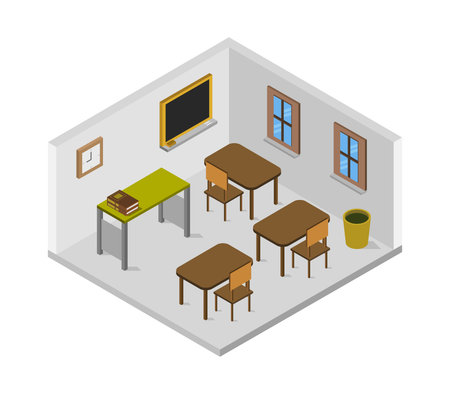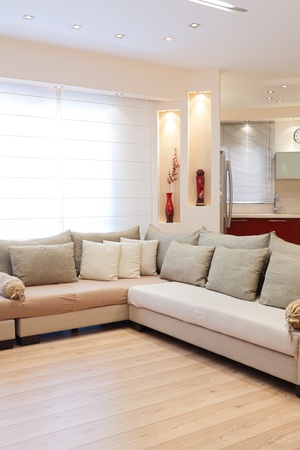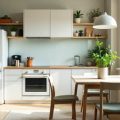Introduction to Zoning in Open-plan Living
Open-plan living has long captured the hearts of British homeowners, blending tradition with contemporary sensibilities. Whether it’s a Victorian terrace opened up for more light or a modern flat designed for maximum sociability, these expansive spaces offer an undeniable sense of freedom. Yet, without thoughtful design, open-plan layouts can easily feel chaotic and lack a sense of purpose. That’s where zoning steps in. By defining distinct areas within one large room—be it for relaxing, dining, or working—zoning brings both style and order to multifunctional homes. In the UK, where our living spaces often double up as everything from offices to playrooms, zoning isn’t just a trend; it’s essential for creating comfort and making everyday life flow smoothly. This article explores how using different textures can help you carve out inviting relaxation zones that feel distinctly British: practical yet full of character.
2. The Role of Textures in Setting the Mood
When it comes to open-plan living, textures play a pivotal role in setting the tone and atmosphere of each area. In British homes, where comfort and character go hand-in-hand, layering different materials helps transform expansive spaces into inviting nooks. From the gentle embrace of a chunky knitted throw draped over a sofa to the polished finish of hardwood flooring underfoot, these tactile choices do more than please the eye—they define how we feel in a space.
By thoughtfully selecting textures, you can subtly zone your open-plan area without erecting physical barriers. For example, a plush rug under a coffee table can signal a lounge spot for winding down with tea, while smooth leather cushions on window seats offer a distinct reading corner. Mixing textures is not just about aesthetics; it’s about creating micro-environments that cater to daily rituals and moods.
| Texture Type | Suggested Placement | Mood Created |
|---|---|---|
| Knitted Throws & Cushions | Sofas & Armchairs | Cosy, Relaxed |
| Sleek Hardwood Floors | Main Walkways & Dining Area | Polished, Spacious |
| Wool Rugs | Lounge or TV Zone | Warm, Inviting |
| Linen Curtains | Windows between Zones | Softly Separated, Airy |
| Ceramic or Stone Tiles | Kitchen Area | Clean, Practical |
This layering of surfaces not only adds visual interest but also provides subtle cues for how each part of the room should be used. British interiors often celebrate individuality through tactile details—think battered leather pouffes or handwoven baskets—that bring both function and warmth. By zoning with texture, you maintain an open feel while ensuring each area has its own sense of purpose and comfort.

3. Key Textures for British Comfort
When it comes to crafting inviting relaxation zones in an open-plan living space, nothing speaks to British comfort quite like the country’s signature textures. These materials not only add warmth and tactile interest but also subtly reference the heritage and character of UK homes. Classic choices such as wool, tweed, velvet, and natural fibres are mainstays in British interiors—each bringing its own unique sense of cosiness and tradition.
Wool: Timeless Warmth
Wool throws draped over a sofa or a chunky knit cushion on your favourite armchair instantly signal comfort. Opt for British-made blankets in muted tones or tartan patterns to evoke that countryside retreat feel even in urban flats. Layering different weights of wool—think fine merino with heavier Shetland knits—adds depth and makes your seating area irresistibly snug.
Tweed: Heritage Texture
Tweed is synonymous with classic British style. Incorporate tweed through upholstery on accent chairs, or use tweed cushions mixed with plainer fabrics for a tailored touch. Its slightly rugged texture contrasts beautifully against smoother surfaces, helping to visually define relaxation areas while nodding to traditional British tailoring.
Velvet: Understated Luxury
For a hint of understated luxury, velvet is hard to beat. A velvet sofa or pouffe in jewel tones—think deep green, navy, or plum—creates a focal point within your open-plan layout. Velvet’s soft pile catches the light differently throughout the day, adding visual interest and inviting you to sink in and unwind.
Natural Fibres: Lightness and Balance
Balance out richer textures with lighter natural fibres like linen, cotton, or jute. Linen curtains or a cotton rug underfoot can soften the transition between zones and prevent your space from feeling too heavy. Jute baskets are both practical for storage and perfect for maintaining that relaxed, lived-in vibe so prized in British homes.
Layering for Maximum Comfort and Local Flavour
The secret to achieving authentic British comfort is thoughtful layering. Combine these classic textures by pairing wool throws with velvet cushions, mixing tweed details alongside crisp cottons, or offsetting plush textiles with touches of rattan or wicker. This approach not only enhances comfort but also anchors each relaxation zone firmly within the context of local style—making your open-plan living area feel distinctly British yet entirely your own.
4. Practical Zoning Ideas for Every Home
Creating distinct relaxation zones in an open-plan living space doesn’t require major renovations—thoughtful arrangement and the right textures can work wonders. Here’s how to carve out cosy corners and calm retreats using furniture, rugs, and accessories, all while keeping that quintessentially British sense of comfort and order.
Furniture Arrangement: Building Natural Boundaries
Start by positioning sofas, armchairs, or shelving units to subtly define each area. For example, place a sofa with its back facing the dining area to signal where the lounge zone begins. If space allows, use bookcases or sideboards as room dividers—they add both storage and structure without closing off the room.
Rugs: Anchoring Each Zone
Rugs are brilliant for visually anchoring a space. Opt for soft, plush textures in the relaxation area—think thick wool or faux fur for a touch of British hygge. In more active areas like play spaces or home offices, choose flat-weave or natural fibre rugs for durability. This table offers quick guidance:
| Zone | Recommended Rug Texture | Purpose |
|---|---|---|
| Lounge/Reading Nook | Plush wool or shaggy pile | Adds warmth & comfort underfoot |
| Dining Area | Low-pile or jute | Easy to clean, practical for spills |
| Workspace | Cotton flat-weave | Smooth surface for chairs |
Accessories: The Finishing Touches
Cushions, throws, and lamps make all the difference. Use different fabric weights and patterns to reinforce each zone’s vibe—velvet cushions in the snug corner, linen throws by the reading chair, and perhaps a statement lamp with a textured shade to draw focus. British interiors often lean towards understated elegance, so keep colours coordinated but don’t be afraid of a classic tartan or floral print.
Pro Tip: Keep It Harmonious
The key is balance—choose a cohesive colour palette throughout your open-plan space so that each zone feels distinct but not disjointed. Soft greys, warm neutrals, and gentle greens work well in UK homes to create a calming flow from one area to the next.
By thoughtfully combining these elements, you’ll have inviting relaxation areas that feel organised yet lived-in—a truly British blend of style and practicality.
5. Storage and Tidiness in Open-plan Living
Keeping open-plan living spaces both comfortable and clutter-free is a true British art, blending practical storage with a touch of homely charm. In these fluid environments, where relaxation and activity often overlap, smart organisation is essential for maintaining that cosy, inviting feel. Built-in alcove shelving—so common in Victorian and Edwardian homes—offers a quintessentially British solution, neatly storing books or displaying keepsakes without encroaching on precious floor space. Under-sofa drawers or ottomans with hidden compartments provide another clever way to tuck away throws and magazines, keeping the lounging area serene and ready for unwinding at a moment’s notice.
Hidden Storage: Maximising Every Nook
The British knack for making use of every nook extends to under-stair cupboards, which can be fitted with pull-out baskets or custom shelves to stash away everything from board games to slippers. For those who love a spot of afternoon tea, a stylish sideboard serves as both a statement piece and a home for cups, saucers, and other essentials—always within easy reach yet tidily out of sight.
Open Shelving with Purpose
Open shelving remains popular in UK homes, especially when styled intentionally to blend comfort with order. Woven baskets or pretty storage boxes can corral remote controls and chargers, while glass jars filled with tealights or dried flowers soften the look and add personality. This approach not only zones relaxation areas visually but also makes it easy to keep surfaces clear for that all-important cuppa or Sunday paper.
Organisation Hacks for Lasting Calm
To prevent everyday items from spreading across the open-plan expanse, consider slimline console tables behind sofas or along walls—perfect for keys, post, or even a discreet tray for shoes by the door. And don’t forget the time-honoured tradition of the coat rack or hall stand near the entrance; it’s a practical touch that instantly signals comfort and welcome as soon as you step inside. Ultimately, weaving thoughtful storage into each zone ensures your open-plan space remains both restful and ready for life’s daily rhythms.
6. Finishing Touches: Personalising with Texture
Once you’ve established your relaxation zones using a thoughtful mix of textures, it’s time to add those finishing touches that truly make each area feel like home. In the UK, there’s a real appreciation for spaces that tell a story—whether through cherished family heirlooms, handmade treasures from local markets, or unique pieces picked up on travels around Britain and beyond. These personal accents bring warmth and character to open-plan living, letting each zone reflect your personality and lifestyle.
Curate with Care
Start by selecting a handful of items that have meaning to you—perhaps a wool throw knitted by your gran, an antique vase found at a car boot sale in the Cotswolds, or a set of ceramics crafted by a local potter. Display these objects thoughtfully, letting them become tactile focal points within their designated zones. Mixing vintage finds with modern textures creates that charmingly layered look so beloved in British homes.
Handmade & Heartfelt
Don’t be shy about incorporating homemade touches. A hand-stitched cushion cover or patchwork quilt not only softens the space but also tells your story. If you enjoy crafts, consider making your own macramé wall hanging or scented soy candles—these small projects invite both comfort and creativity into your relaxation areas.
Mix & Match Memories
The beauty of open-plan living is the freedom to blend styles and eras. Combine contemporary velvet cushions with inherited lace doilies or drape a tartan blanket over a sleek leather armchair. Each element adds another layer to your home’s narrative, creating zones that feel lived-in and uniquely yours.
A Final Word on Texture & Storytelling
As you personalise each zone, remember that textures are more than just visual—they’re deeply sensory and emotional. A favourite jumper tossed over the back of a chair, a cluster of seaside pebbles collected from holiday walks along the Cornish coast, or even a pile of well-thumbed novels can all serve as textured reminders of happy times and meaningful places. Let every choice speak of comfort, familiarity, and the things you love most.


